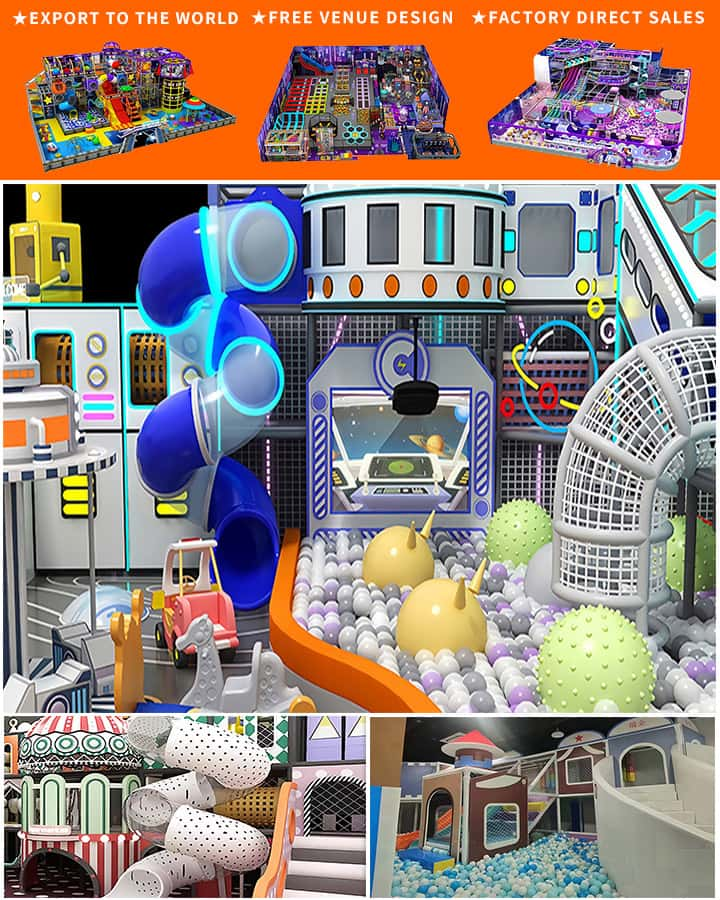In recent years, the evolution of indoor playground design has taken a significant leap forward, blending creativity, technology, and safety to create immersive environments for children of all ages. The modern indoor playground is no longer a simple place for kids to jump around; it’s a sophisticated space that fosters development, encourages physical activity, and offers endless opportunities for imaginative play. Here’s how contemporary designs are transforming these spaces into vibrant hubs of fun and learning.
Safety First: Enhanced Security Measures
Modern indoor playgrounds prioritize safety without compromising on fun. Advanced materials such as soft, shock-absorbent flooring and non-toxic, durable equipment ensure that kids can play safely. Additionally, clever design elements like padded corners, rounded edges, and strategically placed barriers help minimize the risk of injuries. Digital surveillance systems have also been integrated to provide real-time monitoring, giving parents peace of mind while their children enjoy themselves.
Sensory Delight: Multi-Sensory Experiences
 One of the hallmarks of modern indoor playground design is its focus on multi-sensory experiences. Soft lighting, soothing colors, interactive sound installations, and textured surfaces engage children’s senses, creating an environment that is both stimulating and calming. These sensory-rich settings are especially beneficial for young children, aiding in cognitive development and emotional regulation.
One of the hallmarks of modern indoor playground design is its focus on multi-sensory experiences. Soft lighting, soothing colors, interactive sound installations, and textured surfaces engage children’s senses, creating an environment that is both stimulating and calming. These sensory-rich settings are especially beneficial for young children, aiding in cognitive development and emotional regulation.
Technological Integration: Smart Playgrounds
Incorporating technology into playground design is another exciting trend. Touchscreen panels, augmented reality (AR), and interactive projections offer new dimensions of play. These tech-savvy additions not only entertain but also educate, with games that promote problem-solving skills, teamwork, and even basic coding concepts. For example, AR treasure hunts can turn a simple slide or climbing wall into part of an adventurous quest, making physical activity more engaging.
Customization and Flexibility: Tailored Play Areas
Modern indoor playgrounds are increasingly being designed with flexibility in mind. Adjustable equipment and modular structures allow for easy reconfiguration, ensuring that the space can adapt to different age groups, events, or activities. This customization extends to themed areas—from pirate ships and jungle gyms to futuristic space stations—ensuring that every child finds a section that piques their interest.
Sustainability: Eco-Friendly Choices
Sustainability is also a key consideration in modern indoor playground design. Environmentally friendly materials, energy-efficient lighting, and eco-conscious building practices are becoming standard. Play equipment made from recycled plastics, sustainably sourced wood, and low-VOC (volatile organic compounds) paints contribute to a healthier environment for both children and the planet.
Social Interaction: Community-Centric Spaces
Finally, modern indoor playgrounds are designed to be community-centric, fostering social interactions among children and between generations. Open layouts encourage group play, while cozy nooks provide spaces for quieter activities or parent-child bonding. Some facilities even incorporate cafés or reading corners where parents can relax while keeping an eye on their little ones.
In conclusion, modern indoor playground design is revolutionizing the way we think about children’s play spaces. By combining safety, sensory engagement, technology, flexibility, sustainability, and social interaction, these innovative environments offer enriching experiences that go beyond mere entertainment. As designers continue to push the boundaries of creativity and functionality, the future of indoor play looks incredibly bright—and incredibly fun.




